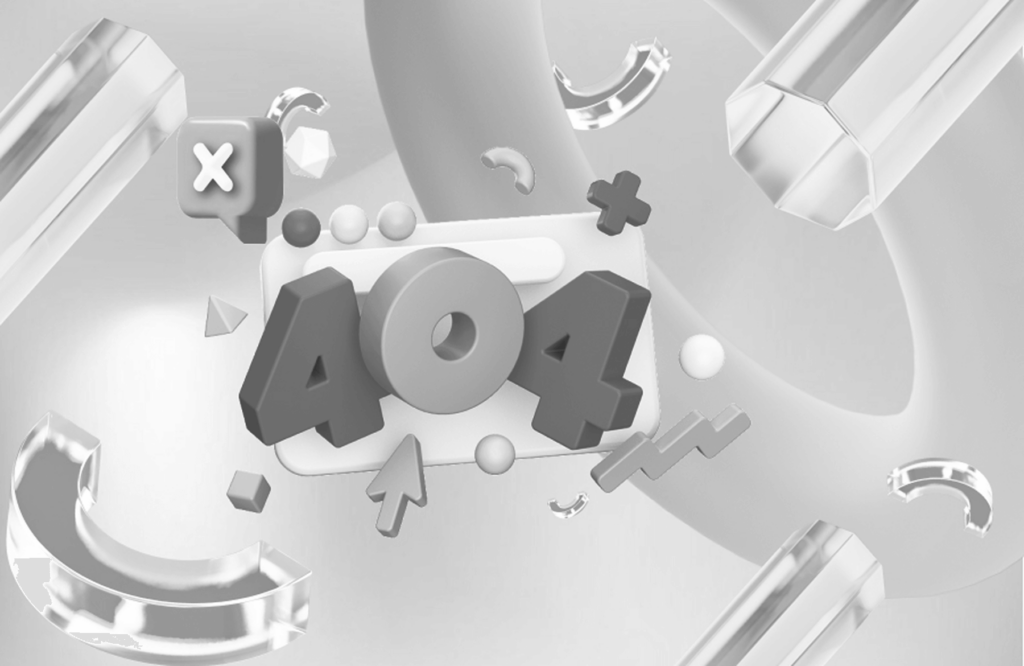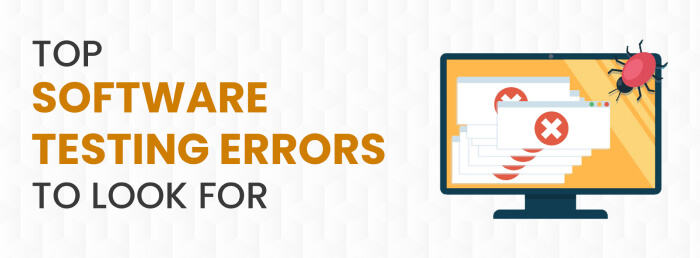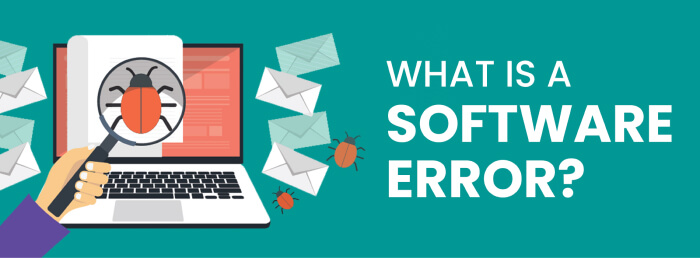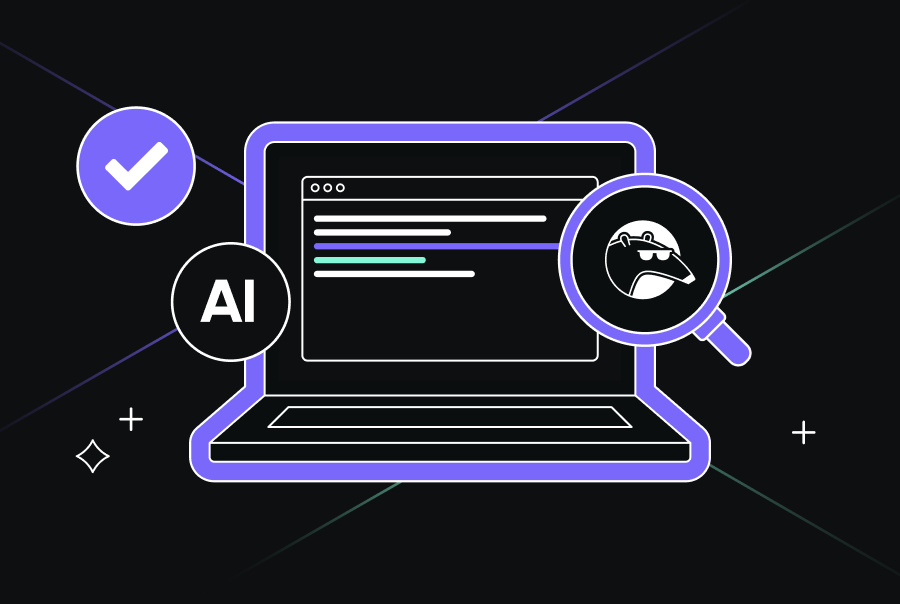Top Software Testing Errors to Look Out For


In the fast-paced world of software development, where innovation and cutting-edge technology rule the roost, the significance of comprehensive software testing cannot be overstated. Behind every successful software lies a meticulous testing process that scrutinizes every nook and cranny to unearth potential defects and ensure an unparalleled user experience.
However, amidst the race to launch, errors in the testing phase can stealthily creep in, undermining the entire development effort.
This article will discuss the common software testing errors developers face in the software development industry.

First, let’s look at the definition of errors in software testing.
Software Errors

Software errors are inadvertent issues or mistakes that occur during the entire software development life cycle. These errors can originate in requirements gathering, design, coding, testing, or even during the deployment phase. They are essentially deviations from the expected and desired behavior of the software.
Errors can be caused by miscommunication, incomplete specifications, lack of domain knowledge, inadequate testing, and even external factors like hardware or network issues. Also, errors can be present in any phase of software development and may result from human factors or system-level interactions.
The Significance of Addressing Software Errors
There are several reasons for considering these errors.
- Quality and Reliability: Software errors can lead to malfunctions, crashes, or unexpected behavior, resulting in a low-quality product that may not meet user expectations. Resolving errors ensures the software operates as designed, offering users a dependable and consistent experience.
- User Experience: Software errors can cause user frustration, resulting in a bad user experience. Usability and UX errors can challenge the software, impacting user satisfaction and potentially driving users away from the product.
- Security and Privacy: Software errors can give rise to security vulnerabilities that hackers could exploit. Security errors, such as incorrect input validation, can lead to data breaches and compromise sensitive information, posing significant risks to users and organizations.
- Cost and Resources: Identifying and fixing errors early in development is more cost-effective than addressing them later or in production. Delayed error detection can require extensive resources and time for debugging and selecting, impacting project schedules and budgets.
- Reputation and Brand Image: Repetitive software errors can negatively impact a company’s reputation and brand perception. Users are likely to trust and use software from organizations that produce reliable, error-free products.
- Legal and Regulatory Compliance: Some industries, such as healthcare and finance, have strict software quality and security regulations. Failure to address errors and adhere to industry standards may lead to legal consequences and penalties.
- Competitive Advantage: High-quality software with fewer errors can give a competitive edge to businesses. Reliable, secure, and user-friendly software attracts and retains more users and customers.
- Productivity and Efficiency: Addressing errors early in the development process improves overall productivity and efficiency. Developers spend less time fixing defects and more time enhancing features and adding value to the product.
Now let’s explore some classifications of errors in software testing.
Common Types of Errors in Software Testing

1. Functionality Errors
Functionality errors refer to issues where the software fails to perform its intended functions or does not meet the specified requirements.
Example: A healthcare application is specifically designed to continuously monitor patients’ vital signs and promptly notify healthcare professionals of any abnormalities detected. However, due to a functionality error, the application fails to send timely alerts, resulting in delayed responses to critical patient conditions.
To avoid these errors, we can,
- Establish precise and thorough requirements to ensure software meets intended functionality.
- Include user acceptance testing (UAT) to engage end-users in validating software functionality.
- Regularly review and refine user stories and use cases to align with user needs.
2. Control Flow Errors
Control flow errors occur when the order or flow of execution in the software does not follow the intended logic, leading to unexpected behavior or incorrect outcomes. These errors can arise from false conditional statements, loop constructs, or function calls.
Example: A control flow error in an online food ordering application can lead to improper order handling. If the app’s logic for checking the availability of a specific menu item is flawed, it may allow customers to order items that are temporarily out of stock. Consequently, the restaurant might be unable to fulfill these orders, leading to customer dissatisfaction and potentially damaging the business’s reputation.
To avoid these errors, we can,
- Use automated software testing tools with extensive test coverage to identify control flow issues.
- Utilize code reviews and pair programming to detect control flow errors early in development.
- Make use of static code analysis tools to detect possible control flow problems.
[blog-subscribe]
3. Logic Errors
Logic errors, often called bugs, occur when the code’s logic or algorithm implementation leads to unexpected outputs that do not align with the intended behavior or requirements. The compiler may not catch these errors and often require debugging to identify and fix them.
Example: An e-commerce website has a shopping cart feature that calculates the total order value for a customer. However, a logic error occurs in the calculation algorithm, resulting in incorrect totals. Consequently, customers are being charged more than they should be, leading to financial losses for both the customers and the company.
To avoid this type of error, we can,
- Follow test-driven development (TDD) to write tests before implementing the code, ensuring proper test coverage.
- Conduct thorough unit testing to identify logic errors in individual code units.
- Use assertions and logging to validate assumptions and track variables’ values during runtime.
4. Integration Errors
Integration errors occur when different modules or components of the software fail to work together correctly, resulting in functionality problems when integrated into a more extensive system.
Example: A company is developing an enterprise resource planning (ERP) system with separate inventory management, sales, and accounting modules. During the integration process, it was discovered that the sales module is not correctly updating the inventory levels when orders are fulfilled. This integration error leads to discrepancies between the inventory records and available stock, causing inventory management issues and inaccurate financial reporting.
We can,
- Implement integration testing to verify that different modules work correctly together.
- Use continuous integration (CI) to automatically test software integrations with each code change.
- Emphasize communication and collaboration between teams responsible for different software components to avoid this type of error.
5. Boundary Condition Errors
Boundary condition errors occur when the software behaves unexpectedly or improperly when input values are at the extreme ends of valid ranges or beyond the specified limits.
Example: A scientific simulation software requires users to input specific parameters, such as temperature values, to perform accurate calculations. If the software does not handle boundary conditions correctly, it may crash or produce incorrect results when users input values outside the acceptable temperature range, causing inaccurate scientific predictions.
We can follow below best practices to prevent these errors.
- Include boundary condition testing in test plans to verify the software’s behavior at extreme input values.
- Use software testing automation with various boundary values to ensure comprehensive test coverage.
- Implement input validation to prevent invalid inputs from reaching critical parts of the code.
6. Performance Errors
Performance errors occur when the software performs poorly under specific conditions, such as high load or extensive data processing, leading to slow response times or crashes.
Example: A popular online streaming platform experiences frequent buffering and playback issues during peak hours when many users access the service simultaneously. This performance error negatively impacts the user experience and leads to user dissatisfaction.
To avoid these errors, we can,
- Conduct performance testing under different load conditions to identify performance bottlenecks.
- Leverage profiling tools to analyze software performance and optimize critical code sections.
- Employ caching and other optimization techniques to enhance the software’s responsiveness.
7. Usability and UX Errors
Usability and user experience errors arise when the software’s interface is confusing, difficult to navigate, or lacks intuitiveness, leading to user dissatisfaction and potential product abandonment.
Example: A mobile banking app has a cluttered and confusing user interface with multiple nested menus and buttons. Users find it challenging to perform basic transactions and often give up using the app, leading to customer loss for the bank.
We can,
- Engage in usability testing with real users to uncover potential user interface concerns.
- Incorporate user-centered design principles to develop interfaces that are intuitive and user-friendly.
- Collect feedback from users and stakeholders for continuous improvement of software usability.
8. Documentation Errors
Documentation errors occur when the software’s documentation, such as user manuals or API references, contains inaccuracies, outdated information, or missing details, leading to confusion for developers or end-users.
Example: A software library provides API documentation that contains outdated method signatures and incorrect usage examples. Developers trying to integrate the library struggle to make it work due to the discrepancies between the documentation and the actual library implementation.
By following the practices below, we can remove these errors.
- Establish a straightforward documentation process, including version control and regular updates.
- Assign responsibility for maintaining and reviewing documentation to ensure accuracy.
- Provide code comments and inline documentation to explain complex code segments.
9. Error Handling Errors
Error handling errors occur when the software does not handle exceptions or unexpected situations correctly, resulting in crashes or incorrect behavior.
Example: During a special sale event, an e-commerce website encounters a sudden surge in traffic, overwhelming the server and leading to an unexpected error. Still, instead of gracefully handling the error and displaying a user-friendly message, it crashes and displays a generic error page, causing frustration and confusion for the customers.
To avoid these risks, we can,
- Implement resilient error-handling mechanisms to gracefully manage exceptions and unexpected scenarios.
- Use logging and monitoring tools to capture and analyze errors in real-world usage.
- Conduct fault injection testing to simulate error conditions and ensure proper error handling.
10. Syntactic Errors in Software GUI
Syntactic errors in the context of software GUI refer to misspelled words or grammatically incorrect sentences within the user interface elements. These errors are noticeable to users during software testing and can negatively impact the overall user experience.
Example: In an email client application, the subject line for composing a new email contains a grammatical error, displaying “Compose you email” instead of “Compose your email.” Users encountering this syntactic error might question the application’s quality and reliability, potentially impacting their trust in the email client for sending professional or essential communications.
We can,
- Utilize IDEs or code editors with built-in syntax highlighting and error-checking features.
- Encourage code reviews and pair programming to catch syntax errors during development.
- Adopt linting tools to automatically identify and fix syntactic issues in the codebase to mitigate these errors.
Conclusion
In conclusion, addressing software testing errors is of paramount importance in the software development process. By implementing best practices to prevent or minimize errors, software development teams can guarantee the delivery of high-quality, reliable, and secure software. By fostering a culture of error prevention and continuous improvement, software development teams can gain a competitive edge, strengthen their brand image, and build long-lasting customer loyalty.


